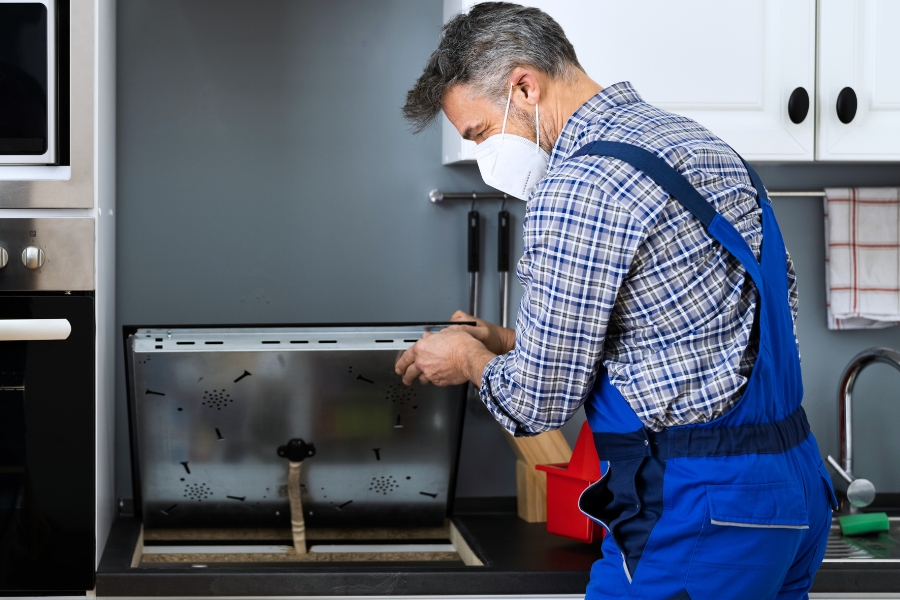Stove Has Uneven Hot Spots
Is your stove burning food in one spot and barely warming it in another? If your pots and pans are cooking unevenly across the surface, the problem could be more than just the recipe. Uneven hot spots are a common stove issue, especially in older appliances or those with worn components.
When a burner doesn’t distribute heat evenly, it can lead to undercooked meals, burnt edges, and a lot of wasted time in the kitchen. Luckily, many causes of uneven heat on a stove are minor and fixable without replacing the whole appliance.
Let’s take a look at the most common reasons your stove might be cooking unevenly and what you can try before calling in a certified stove repair technician near you.
Causes of Uneven Heat on Stove
Issues with the Stove’s Burners
The burners are the heart of your stove’s heat source. If they’re dirty, damaged, or misaligned, they can easily cause hot spots and uneven heating.
Things to look out for in your stove’s burners:
- Inspect electric coils: If you have electric coils, make sure they’re firmly plugged into the socket and not bent or warped. This might be hard for you to inspect alone, it’s recommended you call a technician who specializes in stove repairs to check if you’re not comfortable.
- Try swapping burners: If your stove allows it, swap a working burner with the problem one to see if the issue follows the burner or stays with the socket. If you notice it only happens on one burner, you’ve isolated the problem! But you might need to replace or fix it depending on the damage.

Malfunctioning Burner Control or Sensor
Some electric stoves have heat sensors or control boards that regulate temperature. If they malfunction, the burner may heat erratically or not at all.
How to find a broken stove control or sensor:
- Reset the stove: Unplug or turn off the stove at the breaker for 5 to 10 minutes to reset the control system.
- Test another burner: If one burner cycles on/off more frequently or feels weaker, that sensor or control may be the problem.
- Look for flickering or inconsistent power: This could point to a failing sensor or control board, especially in modern touch-control stoves.
Mismatch Between Stove Burner and Pan
If your pan doesn’t match the size or type of burner it’s sitting on, you’ll end up with uneven heating, especially with glass-top stoves.
How to find the perfect pan for uneven hot spots:
- Use the correct burner size: Always match your pan to a burner that’s similar in size for even heating across the surface.
- Avoid oversized pans on small burners: This can create cold zones around the edges of your cookware.
- Check for proper contact: On glass stoves, the pan must lie flat for the stove to sense and distribute heat properly.
Low-Quality Cookware
Even the best stove won’t heat evenly if the cookware is thin, warped, or poorly made. Cheap pans tend to develop hot spots, no matter how good your appliance is.
Upgrading your cookware to match your stove:
- Test your pan on a flat surface: If it wobbles or doesn’t sit flat, it won’t heat evenly. Time to replace it.
- Upgrade to heavier cookware: Cast iron, stainless steel, and multi-layered pans distribute heat more consistently.
- Avoid aluminum or non-stick pans with thin bases: These are the most likely to develop uneven heating fast because of its thinner build.
Fixing A Stove That Heats Unevenly Yourself
Some of these issues have nothing to do with a broken stove which is great! You can easily troubleshoot at home without calling a technician. Here’s what we covered:
- Clean your burners: Food debris or rust can cause burners to heat unevenly. Check to see if the coils under your glass top are damaged, then confirm with a technician.
- Check the stove’s burner sensor: If your burner heats up weird, try resetting the stove at the breaker, testing other burners, or watching for power inconsistencies that could signal a deeper issue.
- Use the right pan size: Using the wrong size pan can throw off heat distribution. Match the pan size to the burner size and make sure it sits flat on the surface.
- Invest in higher-quality cookware: Cheap or warped cookware often creates hot and cold spots. Switch to heavier, multi-layered pans like cast iron or stainless steel for better performance.
Once you’ve done everything you could and you still have extremely hot or cold food in random areas of your pot or pan, it’s time for you to contact us to avoid any dangerous electrical housework in Charlotte.
Calling in the Stove Repair Professionals
With 15+ years of experience, Just Call Appliance Repair has been proudly serving citizens of Charlotte, NC. We have the tools to give you the best stove fix experience at great prices.
We specialize in appliance repairs locally for a long list of brands. When your stove has uneven hot spots, we’ll be right there when you need it most.
FAQs: Why Stove Has Uneven Heat Spots
Why is one side of my stove hotter than the other?
If your stove has uneven hot spots, don’t panic, it’s often easy to fix. This usually happens when burners are dirty, damaged, or partially blocked. Uneven cookware or warped electric coils can also cause heat to concentrate on one side.
How can I even out the heating in my stove?
If possible, start by cleaning the burners and making sure they’re working properly. Use flat, heavy-bottomed cookware and match it to the correct burner size. This helps distribute heat more evenly across the surface.
Can I fix a stove with uneven heating on my own?
Yes, in many cases. Cleaning, repositioning burners, and switching to better cookware often solve the problem. If it doesn’t, it may be time to call a technician.